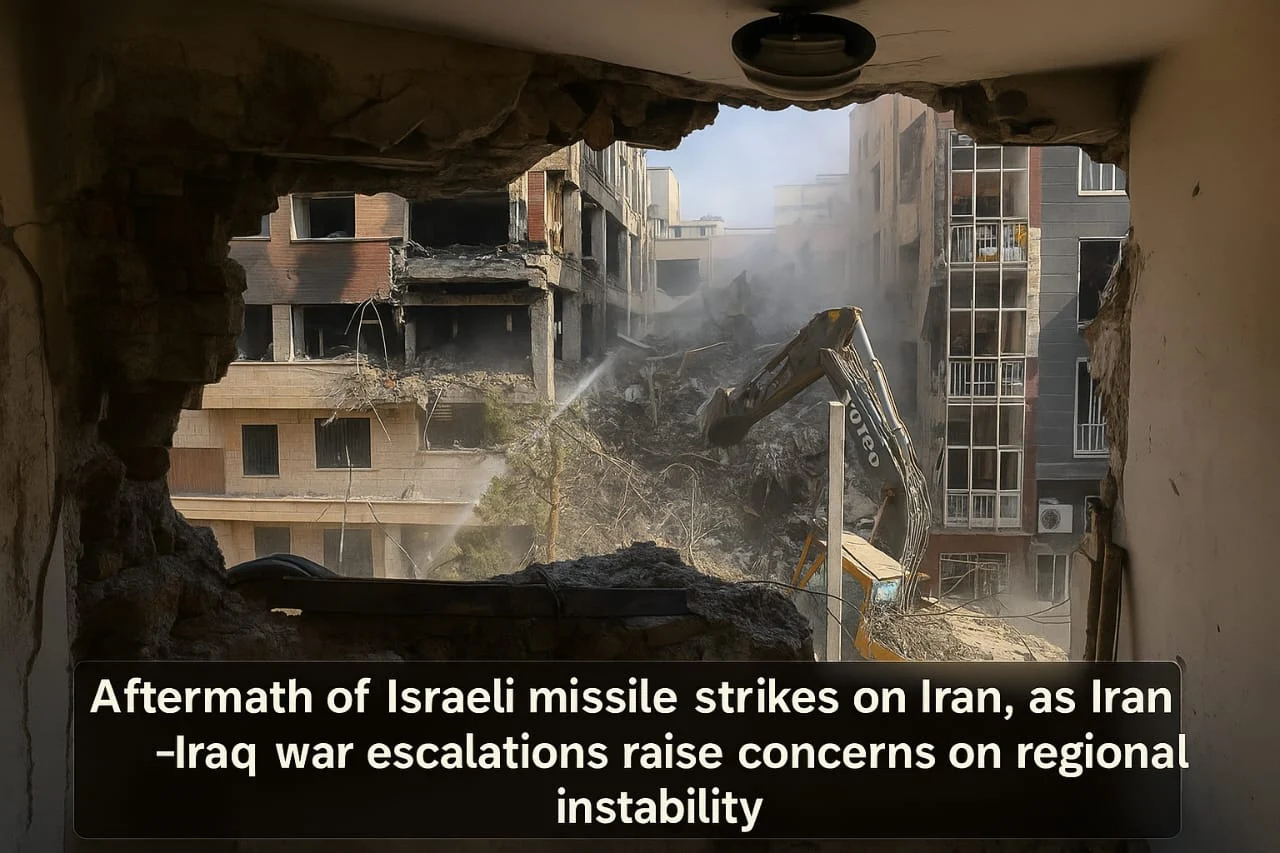⚠️ Overview of the Escalation
- Conflict timeline: On June 13, 2025, Israel launched an Operation Rising Lion, which aimed to destroy Iran's prosperity and missile capabilities by targeting more than 100 Iranian military and nuclear sites in Tehran, Isfahan, and Natanz.
- Immediate retaliation: Iran responded with a wave of ballistic missiles and drones against Israeli cities, launching hundreds of missiles, some successfully intercepted.
- Conflict duration and outcome: The 11-day intense fighting ended with a US-arranged ceasefire on June 24, 2025.
🎯 Strategic Objectives Behind the Attack
Israeli Intent
- Delay or disable Iran’s nuclear progress — striking key enrichment sites.
- Undermine IRGC leadership — Targeted senior commanders to reduce Iran's military hierarchy and undermine its strategic position.
- Shift from covert to overt warfare — marking a significant escalation from shadow operations to direct confrontation.
Iran’s Calculated Counterpunch
Iran aimed to:
- Demonstrate missile capabilities to pressure Israel and prevent future attacks.
- Avoid inviting deeper U.S. involvement — response was powerful yet measured.
- Continue leveraging proxy forces (Houthis) to expand pressure beyond Israel’s borders.
🌍 Regional Shockwaves
Gulf States on Edge
- Economic fallout: Gulf markets fell on investor caution. Saudi Arabia's TASI index fell ~0.7%, and carrier Flynas fell ~13% on its debut.
- Security dilemma: Gulf states are concerned that Iran could close the Strait of Hormuz - the route for 20% of the world's seaborne oil - which could lower oil prices by $8-$31 per barrel.
- Diplomatic recalibration: Instead of strengthening ties with Iran to protect domestic and regional interests, Saudi Arabia has paused the Israel normalization talks.
Proxy Domino Effect
- Yemen's Houthis launched missiles at Israel, prompting Israel to threaten a blockade of Yemen's navy.
- Lebanon and Syria, already fraught with instability, are at risk of intensifying their relationship as Iran seeks to increase pressure through allied militias.
⚠️ Global Reactions & Diplomatic Pressures
- G7 backing: Supports Israel's right to self-defense and calls Iran a destabilizing force; urges de-escalation
- Global calls for restraint: NATO, UN IAEA, Germany, France, China, UK, Australia warn all sides not to escalate conflict.
- U.S. involvement: On the ninth day, the US bombed Iran's nuclear facility; Trump publicly supports Israel as he urges Iran to return to nuclear talks.
📊 Human, Economic & Energy Toll
Casualties & Infrastructure
- Iranian losses: 610+ civilian deaths, thousands injured; major nuclear and military sites destroyed.
- Israeli impact: 29 deaths, ~3,200 injured, thousands displaced.
- Wider region affected: Cross-border incidents have resulted in civilian casualties in Syria, Jordan, Palestine, and Yemen.
Economic Aftermath
- Iran's oil exports fall below 102,000 bpd, regular output halved; gas output cuts damage to key energy infrastructure
- Global investors are keeping a close eye on oil and financial markets as geopolitical risks intensify.
🔮 What’s Next: Risks & Recommendations
Persisting Risks
- Breaking the ceasefire could lead to a full-scale war, especially if Iran seeks nuclear or naval retaliation.
- Iran's potential withdrawal from the NPT has accelerated its nuclear build-up.
- Internal unrest in Iran could lead to civil unrest, especially among the Kurds and other minorities.
Policy Imperatives
- For Gulf states: Strengthen regional security dialogue; diversify energy routes; avoid becoming entangled in polarizing groups.
- For the U.S. & EU: Capitalize on the ceasefire to revive Iran nuclear diplomacy; implement safeguards at nuclear facilities.
- For UN/IAEA: Resume and expand inspection access; strengthen ceasefire verification and humanitarian channels.
Tags:
ceasefire
Global News
Iran
Israel
Israel‑Iran conflict
Israeli military action
Middle East crisis
oil markets
regional stability
USA
War


